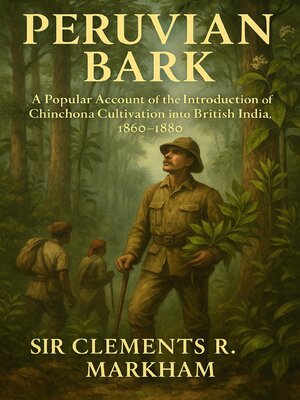Peruvian Bark
ebook ∣ A Popular Account of the Introduction of Chinchona Cultivation Into British India, 1860-1880
By Sir Clemens Robert Markham

Sign up to save your library
With an OverDrive account, you can save your favorite libraries for at-a-glance information about availability. Find out more about OverDrive accounts.
Find this title in Libby, the library reading app by OverDrive.



Search for a digital library with this title
Title found at these libraries:
| Library Name | Distance |
|---|---|
| Loading... |
In Peruvian Bark, Sir Clements Robert Markham recounts one of the most significant—and daring—scientific and imperial achievements of the 19th century: the transfer of cinchona trees, the source of quinine, from South America to British India. With vivid detail and historical clarity, Markham narrates the political, botanical, and logistical challenges faced by botanists, explorers, and colonial officials as they raced to secure a stable quinine supply to combat the scourge of malaria. This was no simple transplanting project; it involved perilous expeditions into the high Andes, negotiations with Peruvian authorities, delicate extraction of seeds and plants, and their subsequent cultivation in Indian soil under the British Raj. Markham, who played a direct role in these efforts, weaves personal narrative with scientific explanation, shedding light on the broader context of empire, medicine, and botanical imperialism. At its core, the book explores how the drive to control disease in tropical colonies intersected with geopolitical ambition and the global movement of knowledge and flora. Rich with period detail and practical insight, Peruvian Bark stands as both a tribute to the unsung heroes of botanical exploration and a testament to how medicine, empire, and science were inextricably linked in the age of empire. For readers of colonial history, ethnobotany, and medical science, this book remains a fascinating account of ingenuity, risk, and international transformation.







